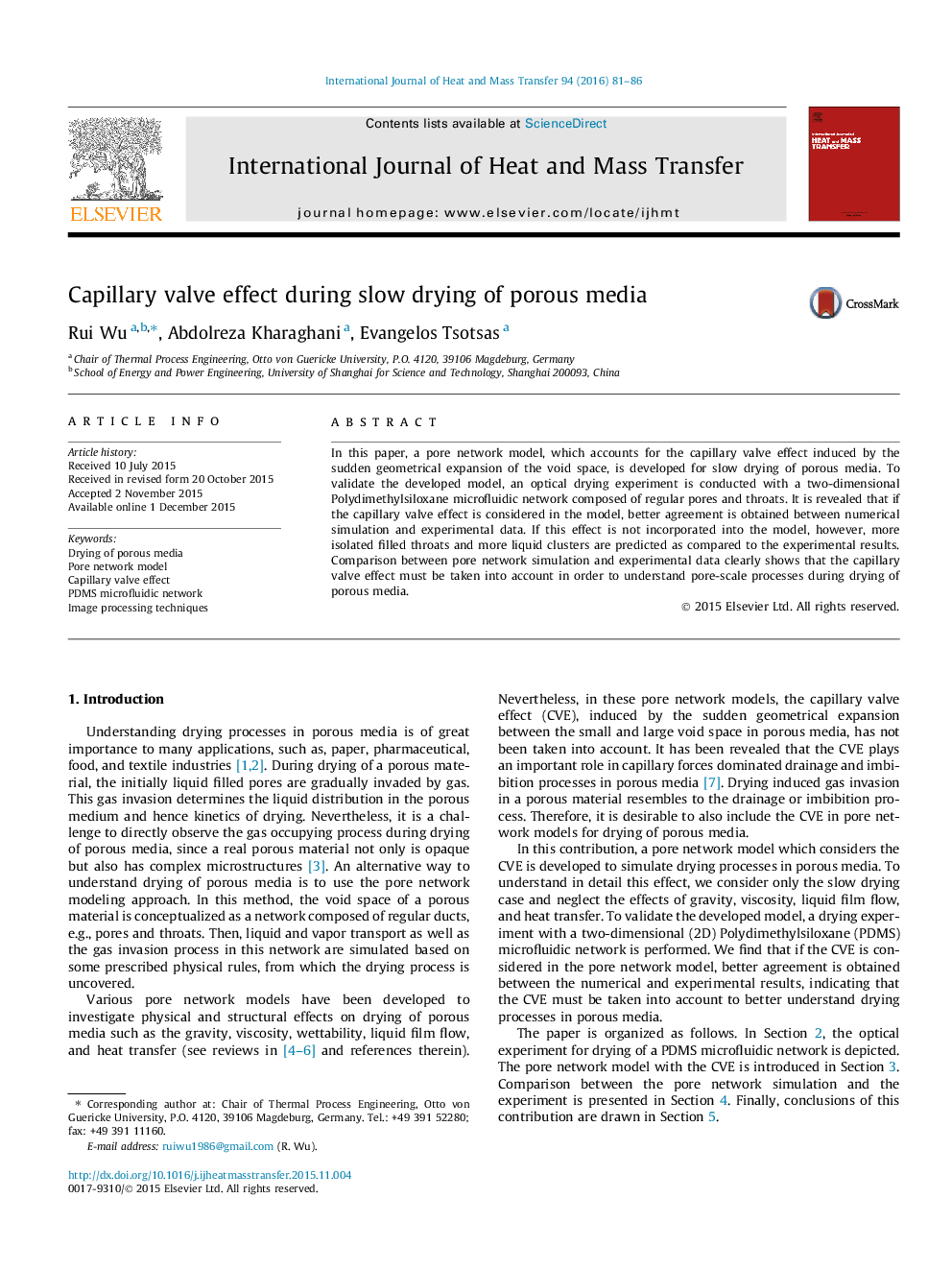| Article ID | Journal | Published Year | Pages | File Type |
|---|---|---|---|---|
| 7056044 | International Journal of Heat and Mass Transfer | 2016 | 6 Pages |
Abstract
In this paper, a pore network model, which accounts for the capillary valve effect induced by the sudden geometrical expansion of the void space, is developed for slow drying of porous media. To validate the developed model, an optical drying experiment is conducted with a two-dimensional Polydimethylsiloxane microfluidic network composed of regular pores and throats. It is revealed that if the capillary valve effect is considered in the model, better agreement is obtained between numerical simulation and experimental data. If this effect is not incorporated into the model, however, more isolated filled throats and more liquid clusters are predicted as compared to the experimental results. Comparison between pore network simulation and experimental data clearly shows that the capillary valve effect must be taken into account in order to understand pore-scale processes during drying of porous media.
Related Topics
Physical Sciences and Engineering
Chemical Engineering
Fluid Flow and Transfer Processes
Authors
Rui Wu, Abdolreza Kharaghani, Evangelos Tsotsas,
